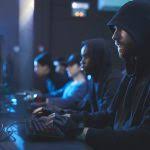The Face of Anonymous Hacker Group A Portrait of Commander X.
Among the most recognized faces of Anonymous is Christopher Doyon, better known as Commander X. A pivotal figure in the notorious hacker group Anonymous, Doyon’s life and actions epitomize the duality of hacktivism part activist, part outlaw. This article seeks to delve into the complexities of Commander X’s journey, his motivations, and the implications of his actions in the context of modern activism.
The Roots of a Hacktivist
Christopher Doyon’s interest in technology blossomed during a time when computers were becoming an integral part of society. As a self-proclaimed “proverbial hippie,” his worldview was shaped by ideals of freedom, equality, and social justice. These principles would later intertwine with his passion for technology, paving the way for his involvement in hacktivism.
Doyon’s acquaintance with Anonymous marked a turning point in his life. Initially drawn by the group’s commitment to fighting against perceived injustices such as government overreach and corporate malfeasance he found himself amidst a collective of like-minded individuals. However, the journey was not without its challenges. Differences in values and goals within the group created tensions, as some members sought to prioritize their agendas over a unified vision. Despite these discrepancies, Doyon embraced the opportunity to join the fight against corruption, becoming an emblematic figure of the hacktivist movement.
High-Profile Activism and Legal Repercussions
Commander X quickly rose to prominence within Anonymous, participating in high-profile operations that caught the attention of law enforcement agencies, notably the FBI. These actions, ranging from DDoS attacks on government websites to the release of sensitive information, positioned him as a symbol of resistance against the establishment. However, with notoriety came scrutiny, and Doyon found himself in a cat and mouse game with authorities.
The methods employed by Anonymous often radical and controversial sparked debate about the ethics of hacktivism. For some, Doyon and his compatriots are champions of free speech and digital rights, akin to protesters carrying signs on street corners. For others, particularly those in law enforcement, he represents a more dangerous breed of activism, labeled as cyberterrorism. This duality raises critical questions about the nature of activism in the digital age: when does the fight for justice cross the line into criminality?
The Evolving Identity of Commander X
Despite the risks associated with his activities, Commander X has continued to engage publicly with the world, albeit with an awareness of the potential consequences. His journey from a digital warrior to a more reflective figure is characterized by a nuanced understanding of his role within the hacktivist landscape. Interviews with Doyon reveal a man grappling with the complexities of his identity straddling the line between a freedom fighter and a fugitive.
In navigating this dual existence, Commander X has encountered a spectrum of perspectives on his actions. Fellow activists often express admiration for his courage, while some criticize his methods and the attention they attract to the larger hacktivist movement. The contrast in opinions reflects the ongoing debate within the community about the means and ends of activism.
Current Activities and Future Aspirations
Today, Doyon finds himself in a precarious situation, continuing to advocate for digital rights while evading the long arm of the law. His current activities focus on raising awareness about the importance of online privacy and free expression. He remains committed to the idea that hacktivism can serve as a legitimate form of protest, akin to traditional activism. Yet, the specter of the FBI looms large, casting doubt on whether his endeavors are viewed as noble or malicious.
The epilogue of Commander X’s story is still unfolding, marked by his efforts to redefine what it means to be a hacktivist in a world where technology and politics increasingly intersect. As he navigates the complexities of his identity, Doyon embodies the ongoing struggle between authority and the fight for social justice in the digital age.
Conclusion: Activist or Cyberterrorist?
The question of whether Commander X is a genuine hacktivist, or a cyberterrorist is one that continues to spark debate. While he champions ideals of freedom and justice, his methods provoke scrutiny and concern among law enforcement. Ultimately, the legacy of Commander X serves as a microcosm of the broader hacktivist movement one that grapples with the challenges of navigating a rapidly evolving landscape of technology, ethics, and activism. As society continues to confront the implications of digital dissent, the face of Anonymous remains a potent symbol of the complex interplay between resistance and responsibility.







